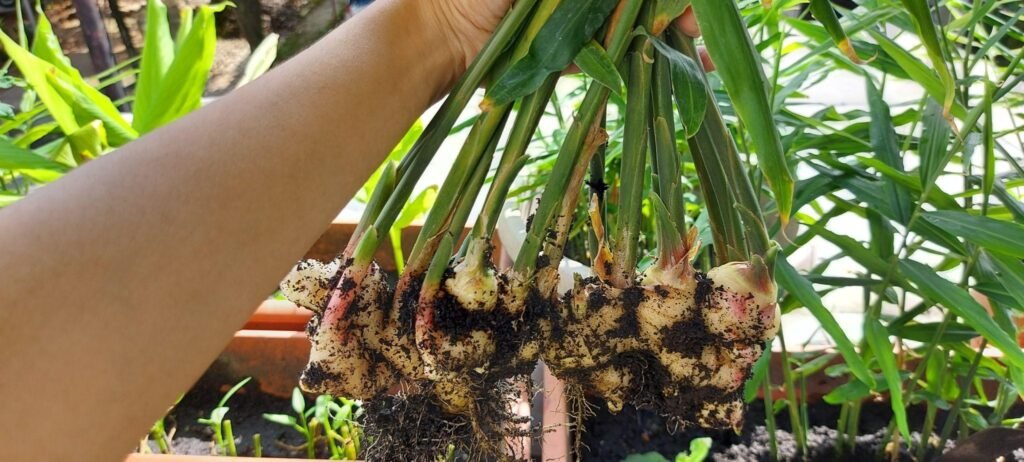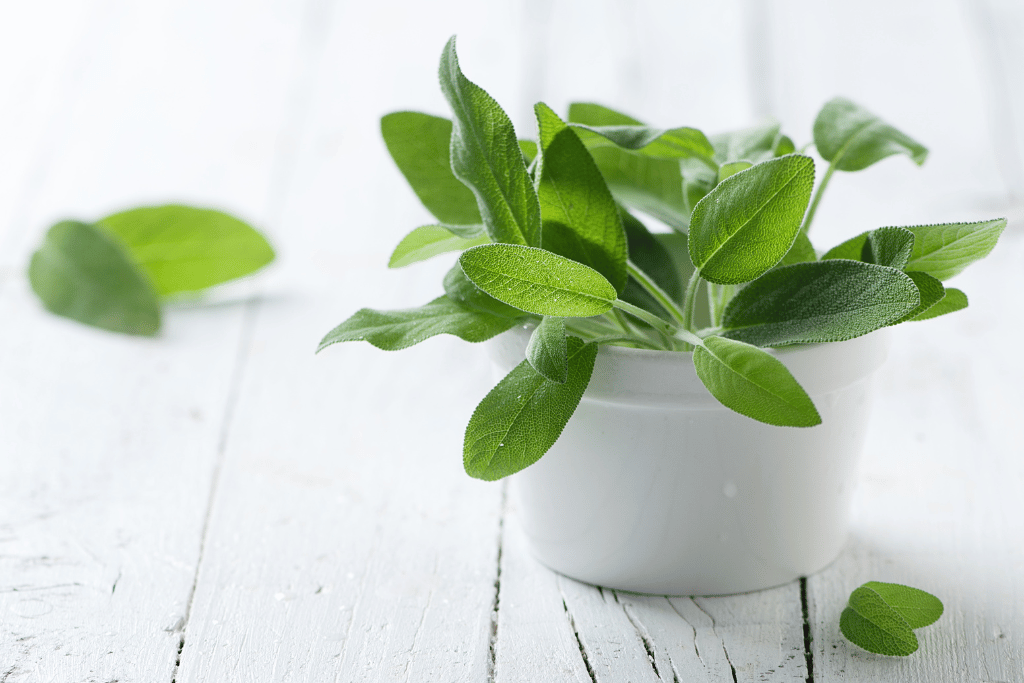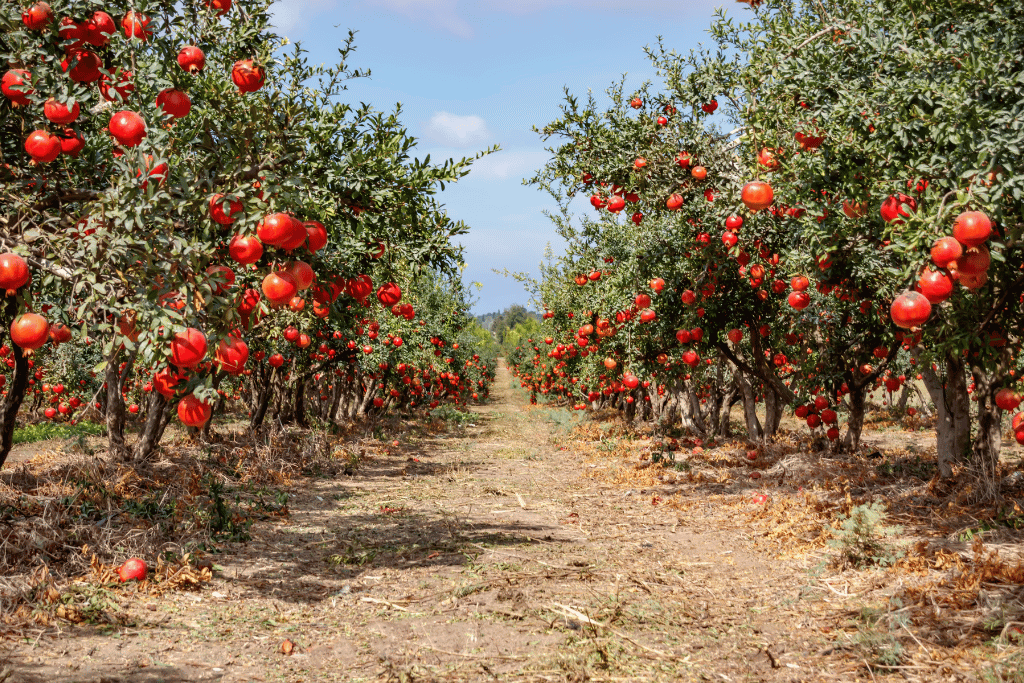
If you’re growing a pomegranate tree, you may be fully satisfied with its health and yield. It is no secret that pomegranate is a tough plant that can survive in dry conditions and inhospitable soils. However, you may be making one essential mistake, especially if you’re a new gardener.
Even though a pomegranate tree may produce well without fertilizer, there is a chance that it might not be reaching its maximum potential. Not only that, but things like pale fruit or droopy buds are clear signs of nutrient deficiency.
Therefore, in today’s article, I will discuss how to fertilize a pomegranate tree. But before I even discuss fertilizers, let me talk about some essential nutrients and the consequences their deficiency may lead to.
Nutritional Requirements of Pomegranate Tree
Now that we know why fertilizer may be important for a pomegranate tree, let us look at some essential nutrients this tree needs to thrive.
Potassium
Potassium, denoted as “K” in the NPK nutrient acronym, is essential for producing well-formed and healthy pomegranate fruits.
The potassium must be readily available in the soil for absorption, a lack of which can lead to chlorosis. It is a condition where the fruit shows pale coloration both inside (arils) and outside (pericarp). It makes the fruit look like it has been bleached. Lack of potassium may also lead the fruits to crack before they reach maturity.
Nitrogen
Nitrogen, denoted as “N” in the NPK acronym, is the most commonly lacking nutrient in a pomegranate tree. It is an essential nutrient that helps the growth of healthy foliage. A lack of nitrogen may lead to a sparse canopy, exposing the fruits to more sun than required.
Inadequate foliage will also hinder photosynthesis, resulting in stunted growth or death. However, there’s another side to this coin. Overfeeding the plant with nitrogen can lead to excessive foliage, which may drain the nutrients away from the fruit and affect the yield.
Some signs of nitrogen deficiency in pomegranate trees include yellowing of the leaves, leaf drop, or bud drop.
Phosphorus and other Micronutrients
Phosphorus, donated as “P” in the NPK acronym, is also an essential macronutrient for a pomegranate plant. Lack of phosphorus and other micronutrients such as boron, manganese, zinc, calcium, and magnesium can lead to leaf yellowing, spots on leaves, and fruit cracking.
Since a lack of these nutrients will cause stress in your plants, they are more likely to experience diseases and pest infestations.
Soil pH
Besides the essential nutrients, the soil pH is an important consideration that can impact how your plant absorbs nutrients. If your soil pH is messed up, no amount of fertilizer can help your plant.
The ideal soil for a pomegranate tree ranges from 5.5-7.0 (mildly acidic to neutral). More acidic soil will experience aluminum and manganese buildup, creating a toxic growing environment. Highly acidic soil acts like a poison for roots, rendering them incapable of accessing nutrients.
But the question is, how would you determine what your pomegranate plant is lacking? Whether it is the soil pH that needs to be fixed or a particular nutrient deficiency? Here’s how.
Determining the Right Fertilizer Ratio
Even though signs of distress like yellowing or drooping leaves will tell you something is wrong, it isn’t enough. Once you have established that your pomegranate plant needs fertilizer, you need to identify the correct NPK ratio.
Each tree has different deficiencies based on the soil condition and growing environment, and choosing the right fertilizer depends on understanding the deficiencies particular to your plant. The best way to do that is to test the soil. Testing soil will tell you which nutrients are lacking and give information about the soil pH.
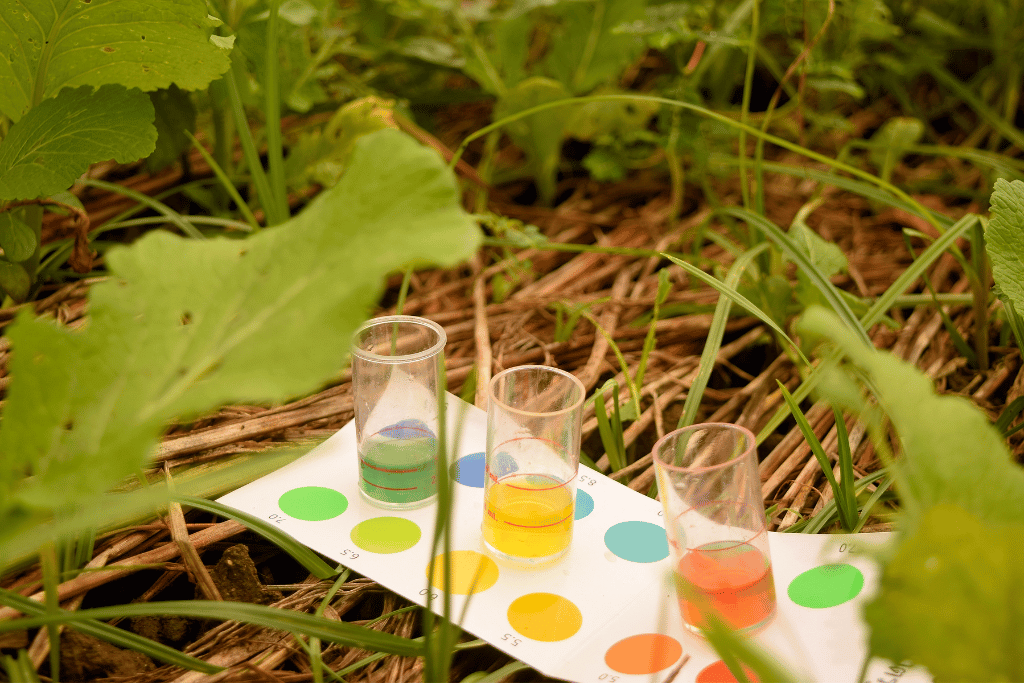
There are two ways to test the soil. One is to consult your local agriculture extension office or a similar authority, and ask them to have your soil tested. The other, and perhaps more accessible, is to have a soil testing kit of your own.
You can find intermediate to advanced soil testing kits online to help you determine pH and the level of NPK nutrients in your soil. From there, you can determine which fertilizer will best suit your pomegranate tree.
Based on my firsthand experience, it is best to test the soil before the winter. Post-winter, you can enrich the soil and improve growing conditions with mulch and manure. This will make the soil more conducive for spring.
However, chemical fertilizers are best applied during spring and not winter. Winter application can cause damage during dormancy and affect growth and production during spring. Let me now share some common types of fertilizers you can use for your pomegranate plant.
Types of Fertilizer for Pomegranate Tree
Here are some commonly available fertilizer types you can purchase based on the preference and needs of your pomegranate plant. You can also use different types together but do so with complete knowledge of your plant’s nutritional needs.
Granular Fertilizers
As the name suggests, this fertilizer comes in the shape of granules. You can spread these granules on the soil around your pomegranate tree. They are preferred by hobby and professional gardeners because of their affordability and ease of application.
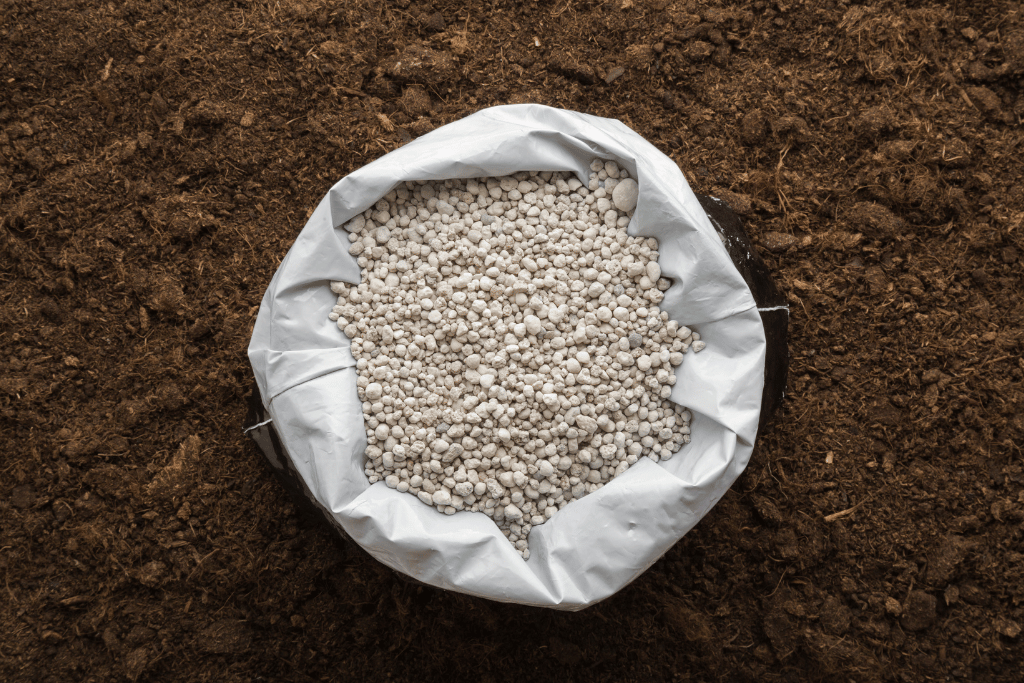
The right way to apply it is to layer it on the soil around the trunk of your pomegranate tree in a circle. Start with the center and keep spreading the fertilizer as wide as the canopy is, because this is almost how far the roots have spread underground. Water the granules thoroughly to absorb nutrients in the soil and the root system.
Another benefit of using granular fertilizer is its gradual release. It prevents the roots from experiencing fertilizer burn as the nutrients slowly get absorbed in the soil.
Foliar Spray Fertilizers
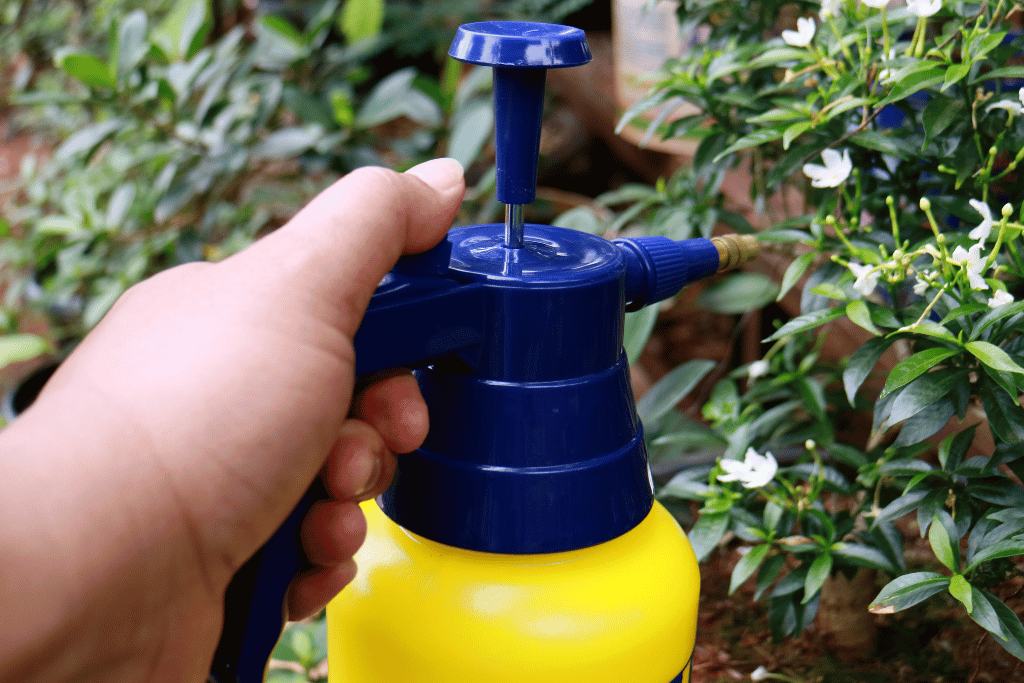
Foliar spray fertilizers work when applied to your pomegranate tree’s leaves through spraying. It is a more direct approach where nutrients are applied directly to the plant instead of getting absorbed in the soil. Foliar spraying is slightly complicated but has proven effective in improving growth and production.
Liquid Fertilizers
Liquid fertilizers are available as pre-made liquids, concentrates, or powders mixed with water in a particular ratio before application. Like granular fertilizer, liquid fertilizer is also applied to the soil. However, the difference is that it needs to be applied recurrently throughout the growing season.
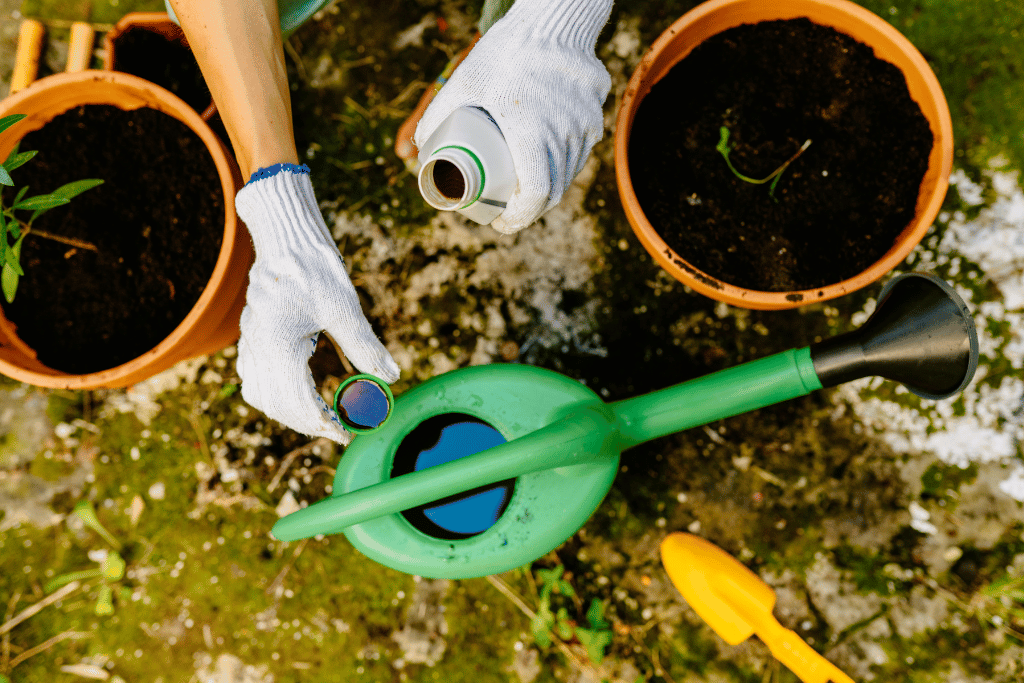
Liquid fertilizers are best suited for young pomegranate shrubs with weaker root systems. That is because there is a decreased risk of fertilizer burn with liquid fertilizers.
Natural Fertilizer for Pomegranate Tree
You can also make organic and natural fertilizers for your pomegranate tree. Use coffee grounds and leafy green scraps you have, mix them, and apply the mixture directly to the soil. For better results, scratch this mixture in the top two inches of the soil.
You can also apply Epsom salt to the soil directly or as a foliar spray. Epsom salt has been shown to produce better-tasting fruits. For a foliar Epsom salt spray, mix ½ cup of Epsom salt with water enough to apply 500 ft of soil.
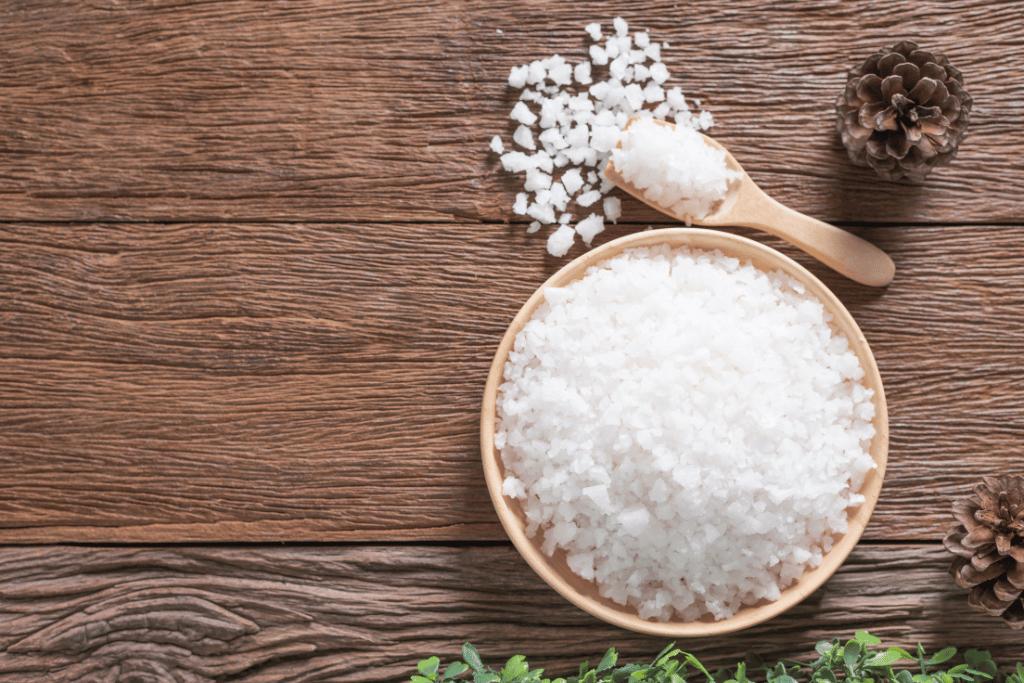
Lastly, another organic fertilizer for a pomegranate tree is neem cake. It has multiple macro and micronutrients, and it can prevent soil-based germs from harming your tree. One kg of neem cake is sufficient for one tree. Castore cake is also an organic fertilizer that can work well if your tree lacks nitrogen. 500 grams of castor cake is sufficient for one pomegranate tree.
Did you know that when it comes to pomegranate trees, when you feed them is equally important as what you feed them? Here are some details on the best time to fertilize a pomegranate tree.
When to Fertilize a Pomegranate Tree?
During the first year of planting, it is best to avoid using chemical fertilizers. The best nutrition during this time is compost, mulch, or rotted manure. Using a strong chemical fertilizer at this point will prevent the plant from developing independently.
As the second year rolls in, you can start using granular fertilizer. 2-3 pounds spread over the soil, as discussed above, will suffice. Apply during early summer and spring, and make sure to go over the package instructions carefully.
When your pomegranate tree is over two years old, you can add half to a full pound of granular fertilizer to the previous quantity (2-3 lbs) you’ve been feeding, as per your plant’s size. The time of feeding will remain the same.
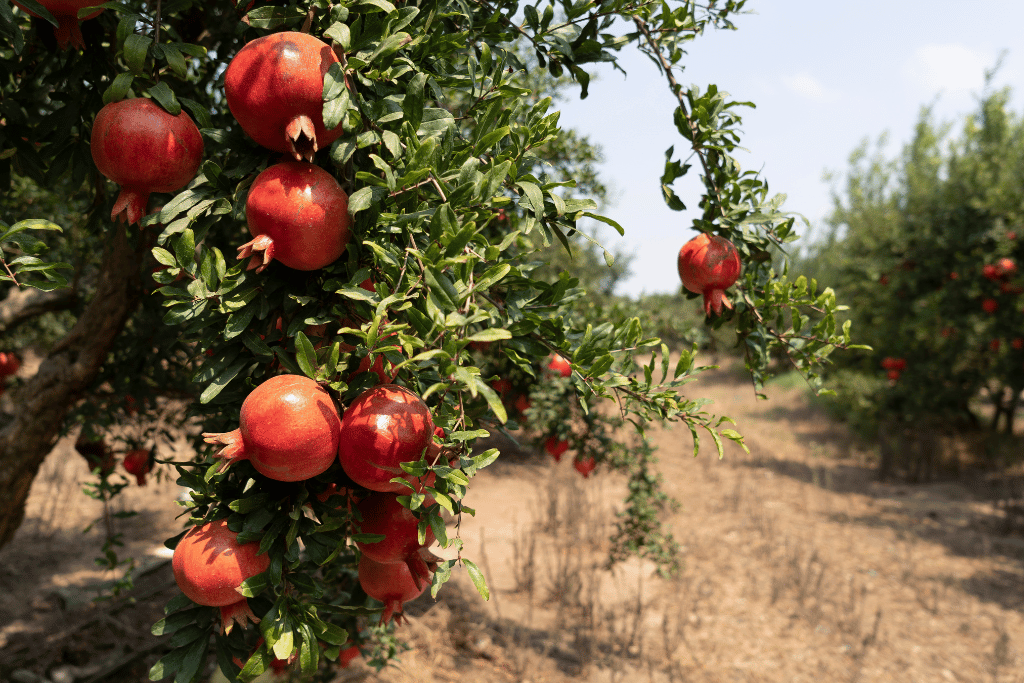
Once your tree is older than five years, you can increase the feeding quantity by 6-8 ounces twice a year in early spring or late winter. The key is to fertilize the tree right before the appearance of new foliage. From this point onward, you can continue feeding your plant with the same amount.
A dormant cycle is a period of rest essential for a pomegranate tree. Therefore, if you use granular or liquid fertilizer, never apply it in late summer or fall. If you do so, the plant will start growing and bloom when it should head into dormancy.
Regardless of the type of fertilizer you’re using, always ensure to read the package instructions and confirm whether the product matches your plant’s needs. You should also consider the tree’s size and age before purchasing the right fertilizer.
What is the Best fertilizer for Pomegranate Tree?
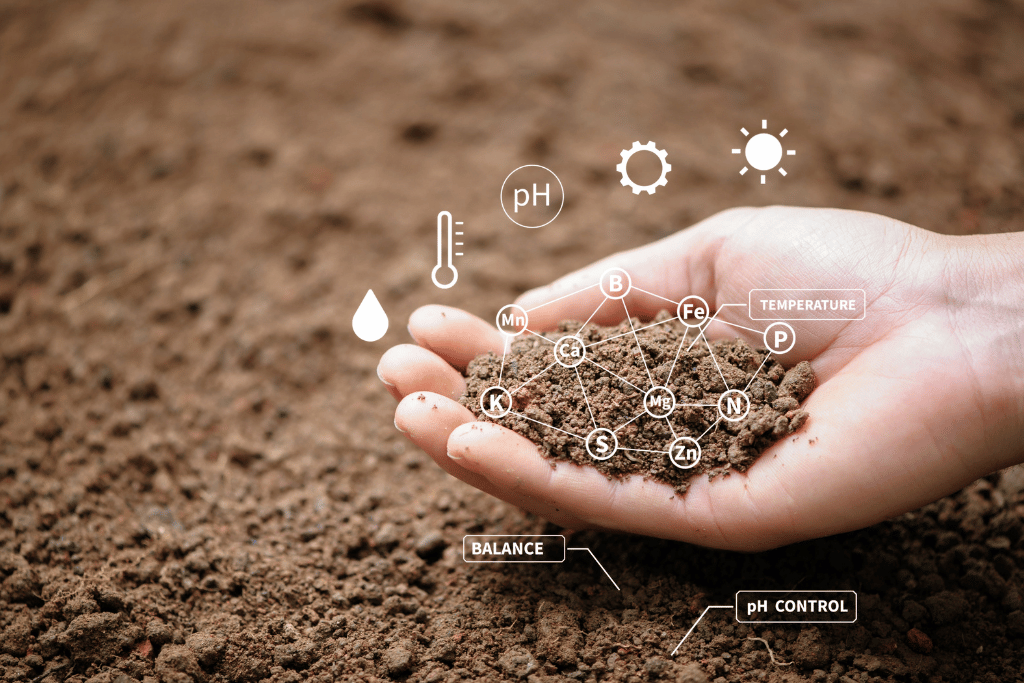
The answer to this question is subjective. Things like plant requirements, personal preference, and ease of application all come into play. However, if you were to ask me about specific products based on my experience, I’ll recommend the following. You’ll also notice that I lean towards organic fertilizers, which is purely a matter of preference.
Purely Organic Tomato and Vegetable Plant Fertilizer
You can’t go wrong with this product if you want to feed a mature pomegranate tree. It has a balanced NPK ratio, and the fertilizer is granular for a prolonged effect. This slow-release fertilizer will comprehensively take care of the growth requirements of your pomegranate tree.
Down To Earth Organic Fruit Tree Fertilizer Mix 6-2-4
If your soil tests indicate an increased nitrogen deficiency, this product will be a safe and appropriate choice. It has a higher nitrogen concentration, while phosphorus and potassium are relatively low. It is perfect for giving my pomegranate tree a leg up when the fruiting season is around the corner.
Jobe’s Organics Fruit & Nut Granular Fertilizer
Last but not least, this is a well-balanced granular fertilizer that works great for pomegranate plants at all stages. Whether your plant is new or established, this fertilizer will help it thrive. But there’s a caveat. If your pomegranate tree is exceptionally low in nitrogen, this fertilizer won’t suffice.
Final Words
Fertilizing a pomegranate tree is not always necessary due to its hardy nature. But it has its place and time. If you can read the signs and understand that your plant may not be producing at its maximum potential, it might need to be fed. The key is to understand the specific requirements of your plant and choose a fertilizer that fulfills only those needs. Overfeeding a pomegranate tree can also lead to serious problems like fertilizer burn.


